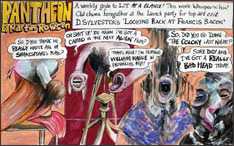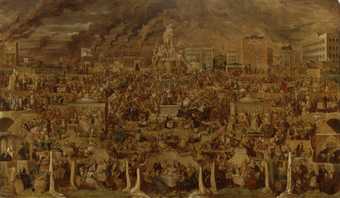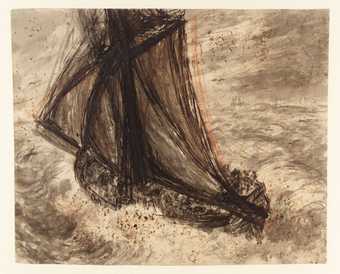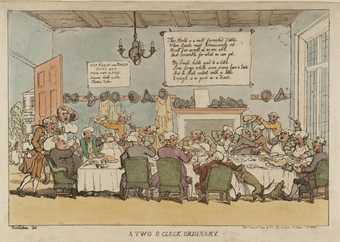
Martin Rowson Pantheon 2000 After Three Studies for Figures at the base of a Crucifixion by Francis Bacon
This special display has been organised to coincide with British Art Week, a celebration of the range and vitality of British visual culture. It contains work by a selection of Britain's best-known contemporary cartoonists, who were invited to submit cartoons inspired by paintings in Tate's collection. Some have imitated the style of a particular work, others the composition or the narrative of their chosen image. All bear witness to the ongoing vitality of caricature in Britain and to the lasting impact of the Tate works; the labels indicate those paintings you can see on display here at Tate Britain. More cartoons can also be seen the Manton Entrance downstairs on level 1.
Caricature has flourished in Britain for over two hundred years, and represents one of the most distinctive and innovative traditions in the history of British art. Some of the best examples were produced in the eighteenth and nineteenth centuries by artists such as James Gillray, Thomas Rowlandson and George Cruikshank. They combined incisive and comic commentaries on the political and social conditions of their day with an impressive mastery of draughtsmanship and printmaking skills. The lampooning of public figures and fashions continues to thrive, and the satirical tradition is arguably as strong today as it has ever been.



